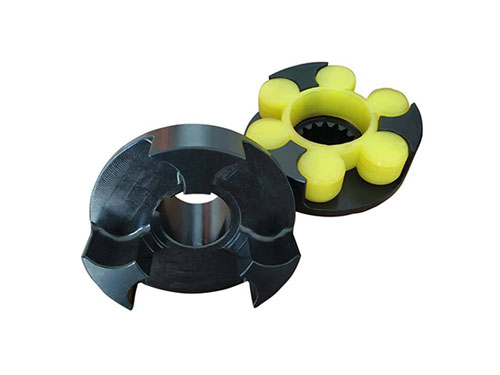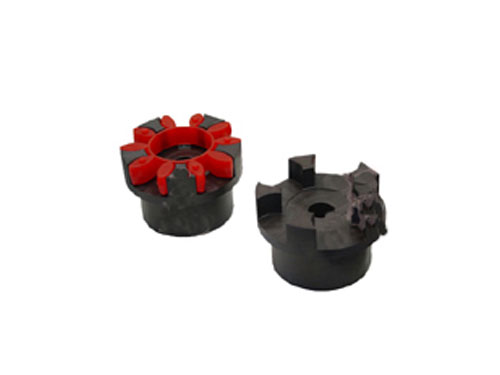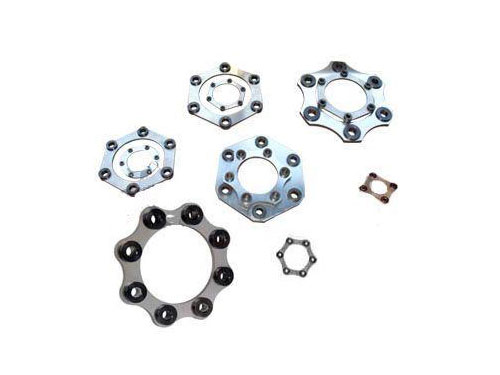 LMZ-ⅡPlum-shaped elastic coupling with brake wheelLMZ-Ⅱ (formerly MLL-Ⅱ) type with brake wheel plum...
LMZ-ⅡPlum-shaped elastic coupling with brake wheelLMZ-Ⅱ (formerly MLL-Ⅱ) type with brake wheel plum... FCL type elastic sleeve pin couplingThe characteristics of FCL type elastic sleeve pin coupling...
FCL type elastic sleeve pin couplingThe characteristics of FCL type elastic sleeve pin coupling... WGT type gear coupling with intermediate sleeveWGT type connecting middle sleeve gear coupling is working...
WGT type gear coupling with intermediate sleeveWGT type connecting middle sleeve gear coupling is working... XL type star elastic couplingXL type star elastic coupling and other coupling...
XL type star elastic couplingXL type star elastic coupling and other coupling... Diaphragm coupling diaphragmDiaphragm couplings have a wide range of applications...
Diaphragm coupling diaphragmDiaphragm couplings have a wide range of applications...What problems should be paid attention to when choosing a diaphragm coupling?
Coupling refers to a device that connects two shafts or a shaft and a rotating part, and rotates together in the process of transmitting movement and power, and does not disengage under normal conditions.Sometimes it is also used as a stabilizing device to prevent the connected parts from being subjected to excessive loads and play a role in overload protection.The diaphragm coupling compensates for the relative displacement of the two shafts connected by the elastic deformation of the diaphragm. It is a high-performance flexible coupling with strong metal components. It does not require lubrication, has a compact structure, and has a long service life. The rotation gap is not affected by temperature and oil pollution, and is suitable for shafting transmission in high temperature, high speed, and corrosive medium working conditions.The coupling diaphragm consists of at least one diaphragm and two shaft sleeves.The diaphragm is fastened to the shaft sleeve with a pin and generally does not loosen or cause backlash between the diaphragm and the shaft sleeve.Some manufacturers provide two diaphragms, and some provide three diaphragms, with one or two rigid elements in the middle, and the two sides are connected to the shaft sleeve.The difference between the single diaphragm coupling and the double diaphragm coupling is the ability to handle various deviations. In view of the complex bending of the diaphragm, the single diaphragm coupling is not suitable for eccentricity.The double diaphragm coupling can bend in different directions at the same time to compensate for eccentricity.
The characteristic of the diaphragm coupling is a bit like a bellows coupling, in fact the way the coupling transmits torque is similar.The diaphragm itself is very thin, so it is easy to bend when the relative displacement load is generated, so it can withstand up to 1.5 degrees of deviation, while generating a lower bearing load in the servo system.Often used in servo systems, the diaphragm has good torque rigidity, but it is slightly inferior to the bellows coupling.Diaphragm couplings are very delicate and can be easily damaged if they are misused in use or not installed correctly.Therefore, it is necessary to determine that the deviation is within the tolerance range of the normal operation of the coupling.
XNUMX. What problems should be paid attention to when choosing a diaphragm coupling?
1. Factors such as manufacturing and device errors between the connected components, temperature changes during operation and load deformation, etc., all put forward requirements for portability.The movable performance compensates for the additional load between shafts, bearings, couplings and other parts due to the relative displacement between the rotating components.
2. Regarding the places where the load is frequently started or the working load changes, the coupling must have elastic elements that play a role in buffering and damping in order to maintain the prime mover and the working machine with little or no damage.
3. However, the transmitted torque is limited by the strength of the elastic element, which is generally inferior to the flexible coupling without elastic elements. Commonly used are elastic sleeve pin couplings, elastic pin couplings, and plum-shaped couplings. , Tyre couplings, serpentine spring couplings and reed couplings, etc.According to different working conditions, the coupling needs to have the following properties: mobility.The mobility of the coupling refers to the ability to compensate for the relative displacement of the two rotating components.
4. Flexible couplings can be divided into flexible couplings without elastic elements and flexible couplings with elastic elements. The former type only has the ability to compensate the relative displacement of the two axes, but it cannot buffer and reduce vibration. The common There are slider couplings, gear couplings, universal couplings, chain couplings, etc.; the latter type contains elastic elements, in addition to the ability to compensate for the relative displacement of the two axes, it also has buffering and damping effect.
5. Couplings can be divided into two categories: rigid couplings and flexible couplings.Rigid couplings do not have the ability to buffer and compensate for the relative displacement of the two axes. Strict alignment of the two axes is required. However, this type of coupling has simple structure, low manufacturing cost, and assembly and disassembly.
6. It is easy to maintain, and it can be determined that the two shafts have a high neutrality, a large transmission torque, and it is widely used.Commonly used are flange couplings, sleeve couplings and clamp couplings.
XNUMX. How to install the bolt of the diaphragm coupling
1. Pay attention to the direction of the bolt when installing the bolt. Do not install the bolt direction at will, otherwise it will cause the diaphragm to twist, and long-term operation will damage the surface of the diaphragm and the bolt mating section and the small hole of the half shaft.
2. Insert the bolt from the outside of the small hole of the flange, then pass it into the hole of the diaphragm, and then pass through the outside of the large hole of the other flange, put on the buffer sleeve, elastic washer, and take care when tightening the nut. Keep the bolts from turning.
3. Because the surface of the mating section between the bolt and the flange is an important mating section for torque transmission, the integrity of the surface directly affects the performance.
4. Therefore, the correct installation of the bolt direction of the diaphragm coupling is a key part, and it must be remembered not to install it backwards and drop any small parts including spring washers, so that the bolt assembly can exert its excellent performance without causing the diaphragm Other parts of the piece coupling are damaged.